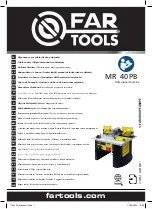
Chapter 19: RMON
254
Alarms
RMON alarms are used to generate alert messages when packet activity
on designated ports rises above or falls below specified threshold values.
The alert messages can take the form of messages that are entered in the
event log on the switch or traps that are send to your SNMP NMS software
or both.
RMON alarms consist of two thresholds. There is a rising threshold and a
falling threshold. The alarm is triggered if the value of the monitored
RMON statistic of the designated port exceeds the rising threshold. The
response of the switch is to enter a message in the event log, send an
SNMP trap, or both. The alarm is reset if the value of the monitored
statistic drops below the falling threshold.
The frequency with which the switch samples the thresholds of an alarm
against the actual RMON statistic is controlled by a time interval
parameter. You can adjust this interval for each alarm.
Here are the three components that comprise RMON alarms:
RMON statistics group: A port must have an RMON statistics group
configured if it is to have an alarm. When you create an alarm, you
specify the port to which it is to be assigned not by the port number,
but rather by the ID number of the port’s statistics group. (As explained
in “Port Statistics” on page 248, statistics groups are also used to
remotely view port statistics in the RMON portion of the MIB tree.)
RMON event: An event specifies the action of the switch when the
ingress packet activity on a port crosses a statistical threshold defined
in an alarm. The choices are to log a message in the event log of the
switch, send an SNMP trap to an SNMP workstation, or both. Since
there are only three possible actions and since events can be used
with more than one alarm, you probably will not create more than three
events.
Alarm: The last component is the alarm itself. It defines the port
statistic to be monitored and the rising and falling thresholds that
trigger the switch to perform an event. The thresholds of an alarm can
have the same event or different events. The switch supports up to
eight alarms.
Perform the following procedure to configure RMON alarms.
1. From the main menu on the left side of the page, click the
RMON
folder.
The
RMON
folder expands.
Содержание AT-GS950/16PS
Страница 12: ...Figures 12...
Страница 14: ...List of Tables 14...
Страница 18: ...Preface 18...
Страница 20: ...20...
Страница 52: ...Chapter 2 System Configuration 52...
Страница 54: ...54...
Страница 92: ...Chapter 5 Multiple Spanning Tree Protocol 92...
Страница 102: ...Chapter 6 Static Port Trunking 102...
Страница 118: ...Chapter 8 Port Mirroring 118...
Страница 140: ...Chapter 11 IGMP Snooping 140...
Страница 174: ...Chapter 14 GVRP 174...
Страница 186: ...Chapter 15 Quality of Service and Cost of Service 186...
Страница 188: ...188...
Страница 216: ...Chapter 17 SNMPv3 216...
Страница 244: ...Chapter 18 Access Control Configuration 244...
Страница 282: ...Chapter 21 Security 282...
Страница 288: ...Chapter 22 Power Over Ethernet PoE 288...
Страница 289: ...289 Chapter 23...
Страница 310: ...Chapter 24 LLDP 310...
Страница 322: ...322...
Страница 334: ...Chapter 26 Software Configuration Updates 334...
Страница 346: ...Chapter 28 Rebooting the AT GS950 16PS 346...
Страница 368: ...Appendix A MSTP Overview 368...
Страница 386: ...Appendix B AT GS950 16PS Default Parameters 386...
















































